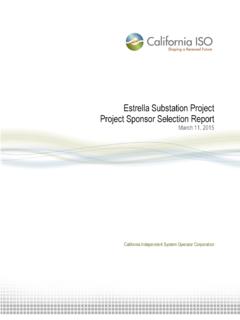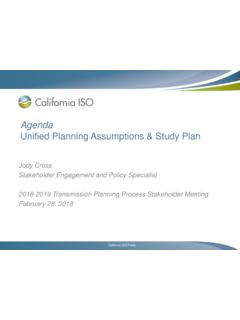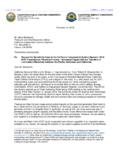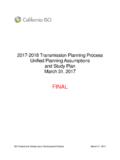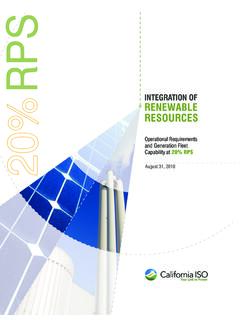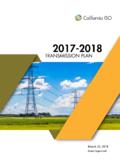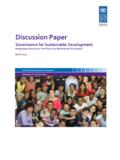Transcription of California Independent System Operator Corporation
1 250 Outcropping Way, Folsom, CA 95630 California Independent System Operator Corporation Greetings, Over the past year, the Board of Governors and Management of the California ISO have assessed the dynamics that are driving the development of a low-carbon, more decentralized electric service model. We began by interviewing over a dozen policymakers and energy industry leaders, each of whom shared their views on the tectonic changes unfolding in our industry, looking from now to 2030 and beyond. These experts also suggested actions that could help strengthen California s move to a highly reliable low-carbon grid.
2 We incorporated these perspectives, along with those of the Board and ISO management, to create the attached draft vision document. It is important to note that, while some of the trends and tasks that we have identified may affect California sooner or to a greater extent than other regions of the West, we deeply respect each state s prerogative to establish its own procurement strategy. It is with this in mind that we have assessed the reliability benefits and other positive impacts of deepening regional collaboration. We will discuss the concepts behind this draft vision at the ISO s Stakeholder Symposium on October 19, 2017 and will subsequently welcome comments from stakeholders.
3 Ultimately, the draft vision, together with your comments, will help inform our ongoing strategic planning process. Thank you for engaging in these important discussions. Richard Maullin, Chair Ashutosh Bhagwat Angelina Galiteva Mark Ferron David Olsen 1 discussion paper Electricity 2030 Trends and Tasks for the Coming Years Prepared by the Board of Governors and Management of the California Independent System Operator Corporation October 2017 2 Contents Introduction: Decarbonize, decentralize, regionalize opportunities for evolving a more secure, sustainable and affordable electric service Trend 1: Electricity is used far more efficiently Trend 2.
4 Gas-fired generation declines significantly as the grid is modernized Trend 3: The System is shaped by the variable output of wind and solar resources Trend 4: Demand becomes as important as supply in balancing the System Trend 5: Electric service is increasingly decentralized Trend 6: Regional collaboration supports efficient grid operations Trend 7: Transportation and building energy use is integrated with electric service Trend 8: Develop ways to enable everyone to contribute to, and benefit from, the transition away from fossil fuels 3 Introduction Decarbonize, Decentralize, Regionalize: Opportunities for evolving more secure, sustainable and affordable electric service Three dynamics are driving California s transition to a clean energy economy.
5 They unlock huge new opportunities to improve public health and reduce greenhouse gases; to make electric service more resilient and secure; to reduce the long-term costs of energy use; and, by taking advantage of new technologies and integrating energy used in transportation and buildings with electricity, to put our entire economy on a dynamic and sustainable footing. Decarbonize: low-cost wind and solar resources, combined with advanced clean technologies, make it feasible to meet most of our energy needs free of the costs, risks and environmental damage of fossil fuels.
6 By 2030, California could get more than two-thirds of its electricity from non-fossil, non-nuclear resources. By 2050, if we electrify much of the energy used in transportation, buildings and homes, a majority of the total energy used in the state can be provided by clean resources. Decentralize: Solar power is generated on hundreds of thousands of rooftops, and is an effective complement to central station power resources. Local generation, together with smart meters, sensors, advanced IT and storage, create the infrastructure for local micro-grids.
7 They offer business districts, campuses and neighborhoods in every part of the state a mode of reliable, resilient and secure electric service, and can be designed to disconnect from the main grid in case of large-scale disturbances. Decentralized distribution networks operate synergistically with the bulk power System , which provides access to low-cost, regional clean resources. Local power and big grid: both are necessary components of least-cost, least-impact electric service. Regionalize: Sharing resources across the western reduces the number of power plants needed in each state, saving money and emissions.
8 Collaboration improves reliability, drives down costs and minimizes transmission needs. And, as we rely on renewables to supply most or all of our electricity in every hour in every part of the state, we will require ready access to a much larger pool of wind, solar, geothermal, biomass and hydro resources than is available in California alone. Given diurnal and seasonal wind-solar output and weather patterns, trading these diversified resources benefits all states. California s energy transition is well underway. State law and policies require a 40% reduction in GHG emissions below 1990 levels by 2030, on the way to 80% reductions in GHG by 2050; 50% of statewide electricity from renewables by 2030, with an additional large percentage supplied by local, decentralized clean generation; 50% improvement in energy efficiency, including increasingly stringent appliance and building standards; million Electric Vehicles in service by 2025 (4 million by 2030); and introduction of Zero Net Energy Buildings by 2020.
9 Together, these and other policies outline a trajectory for California s transition to a clean energy economy. 4 California policy goals address urgent needs. Toxic air pollution from fossil fuels harms our health and imposes huge costs on our economy, with people in low-income communities disproportionately affected. California has taken dramatic steps to reduce carbon emissions, along with SOx and NOx emissions, which are known to contribute to adverse health effects. California s energy transition is an enormous modernization, job creation and investment program.
10 Many fossil fuel plants in service today are old, inflexible and inefficient. Continuous advances in communications, computing and control technologies are improving the security and reliability of both central station plants and decentralized local grids. New energy management technologies can enable industrial facilities, businesses and homes to use energy much more efficiently. Modernizing the ways we produce and use energy can mitigate the public health and environmental impacts of current practices. Doing so will require billions of dollars of investment in cleaner, smarter technologies.

